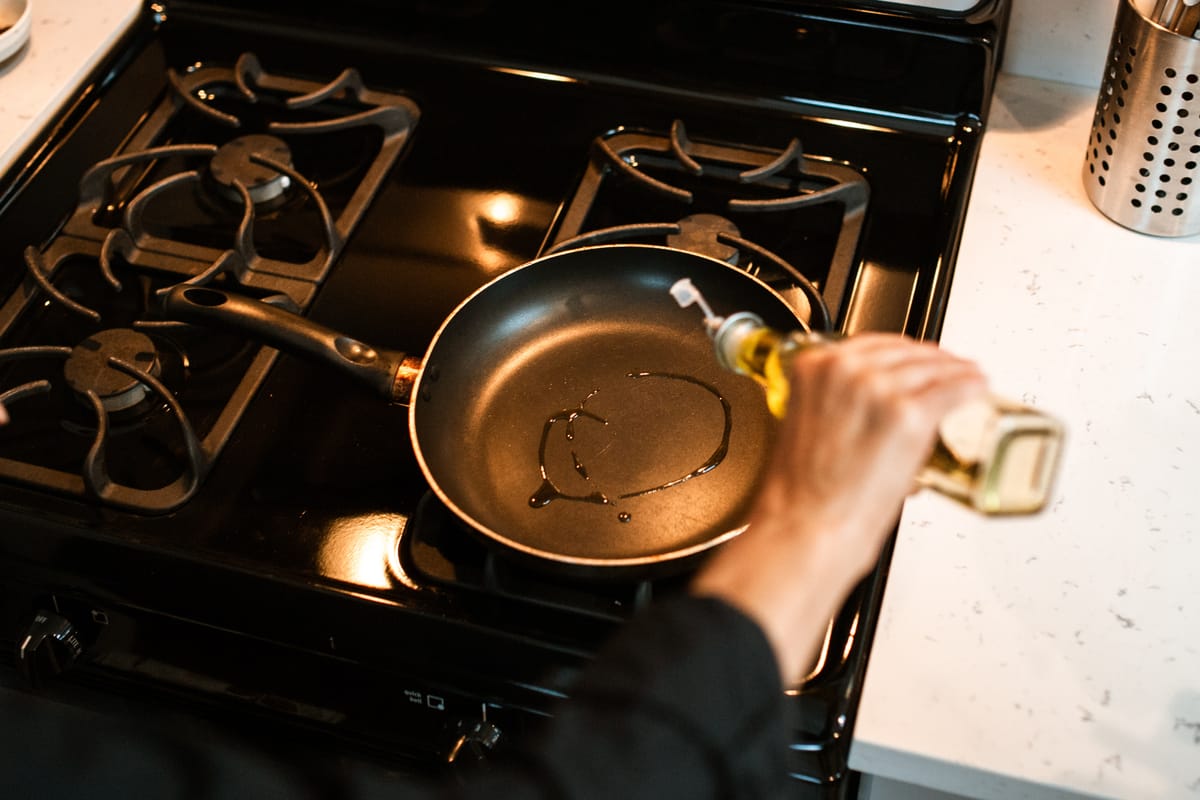I'm not familiar with this; a quick google turned up nothing, nor did a search of our local supermarket's online inventory. Where do you get such a product?
Costco sells an olive oil that can be used for frying. So does just about every market. It’s just not EVOO. Any light colored olive oil, not sold in a dark bottle, will be processed so it can be used to fry foods with due to having a higher smoke point and not become bitter when cooked at high temps.
While the smoke point itself does not matter when purchasing oil, understanding the implications hitting that smoke point has on your food does.

www.oliveoil.com
How Does Olive Oil’s Smoke Point Compare to Other Cooking Oils?
As mentioned above, extra virgin olive oil generally has a smoke point of 350⁰F to 410⁰F. The reason EVOO has a smoke point
range as opposed to a specific number is that smoke point depends on an oil’s free fatty acid (FFA) level, according to the
North American Olive Oil Association. The FFA content of extra virgin olive oil ranges from 0.2% to 0.8%. Higher quality EVOOs often have lower acidity and thus a higher smoke point. Regular olive oil, which is a blend of virgin and refined olive oils, generally has a smoke point around 470⁰F, but may be more prone to oxidative damage due to its lower polyphenol content.
Here are the generally accepted smoke points of most common cooking oils on the market:
- Extra Virgin Olive Oil: 350-410⁰ F (possibly higher with high-quality EVOO)
- Regular or Light Olive Oil: 470⁰ F
- Virgin Avocado Oil: 375⁰ F
- Refined Avocado Oil: 520⁰ F
- Virgin Coconut Oil: 350⁰ F
- Refined Coconut Oil: 450⁰ F
- Butter: 300-350⁰ F
- Ghee or Clarified Butter: 450⁰ F
- Corn Oil, Sunflower Oil, Safflower Oil: 450⁰ F
- Unrefined Sesame Oil: 350⁰ F
- Refined Sesame Oil: 410⁰ F
- Canola Oil: 400⁰ F
- Grapeseed Oil: 400⁰ F
- Unrefined Walnut Oil: 320F
- Unrefined Peanut Oil: 320⁰ F
This explains how oil is made for the different kinds of olive oil you can buy.
At its core, olive oil production hasn't changed much since ancient times. From picking to bottling, here's how olive oil is made in the modern era.

www.oliveoil.com
“While the initial olive milling process may be similar (although temperatures in the processing might be cranked up to improve extraction), the steps in creating refined olive oil are quite different. They involve using substances like alkali, activated carbon and high heat or steam to rid the olive oil of any flaws in flavor and aroma. Olive oil that didn't make the cut as “extra virgin” or “virgin,” i.e. lampante oil, is used to make refined olive oil.”
Basically, EVOO becomes firm at fridge temps which makes it undesirable in a cold salad dressing. Using a light olive oil or just non-EVOO, the oil will remain fluid if put in the fridge which makes for a decent oil to use if making a large batch dressing to keep and store.
I will often just make a quick room temp dressing for salads and not keep fridged versions. It’s very easy to make a quick dressing that has much more flavor than retail products and that are healthier too, as in less sugar and clean ingredients.
SPG, EVOO and lemon or lime juice (fresh squeezed) is a main goto for us. Sometimes I’ll add a pinch of sugar to round it out flavor wise.
If you have a stick blender, you can whip up an excellent vinaigrette in no time. Even using a hand whisk works well too.

:max_bytes(150000):strip_icc()/998762-01b186186ffd40ef9ef5873279590d4a.jpg)



:max_bytes(150000):strip_icc()/1096424-a91db5d4ce954e9f8806cfc174e9fb8c.jpg)